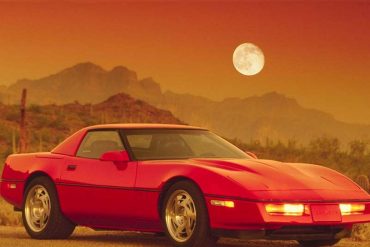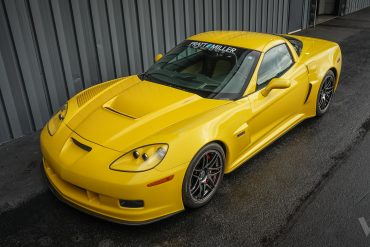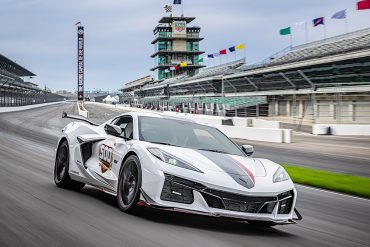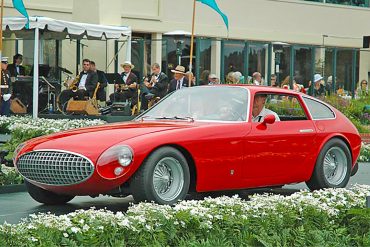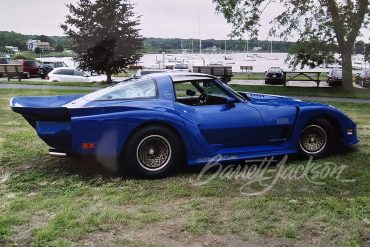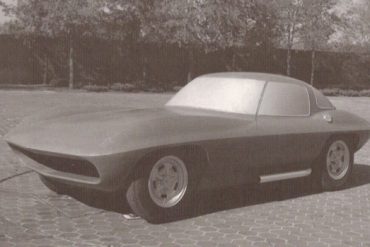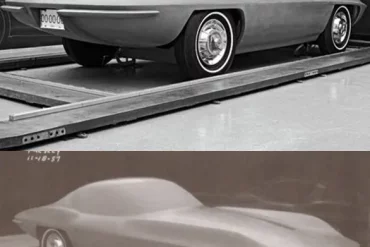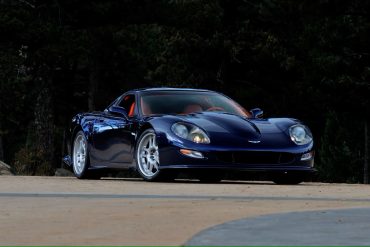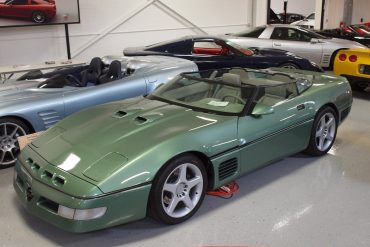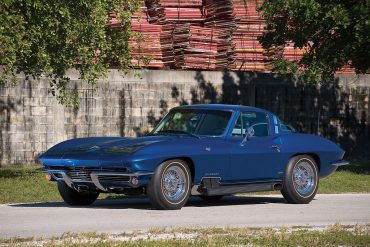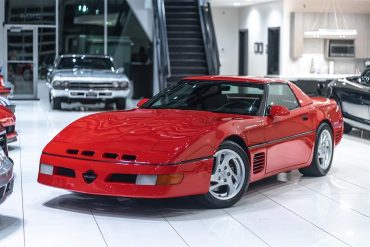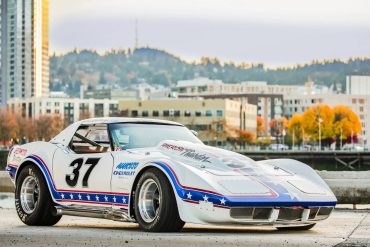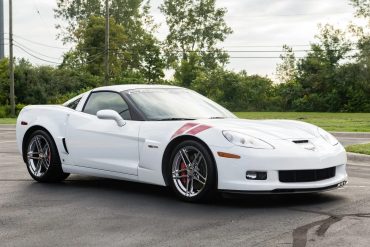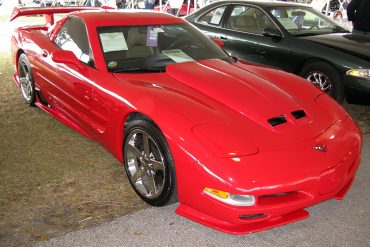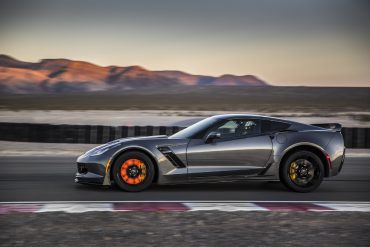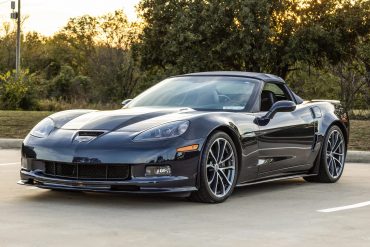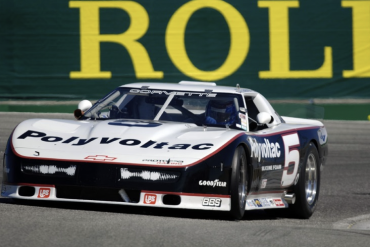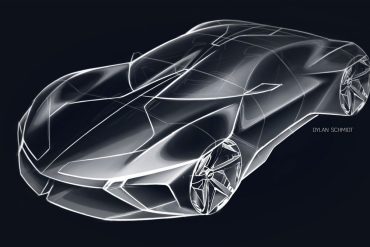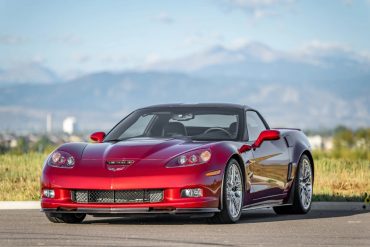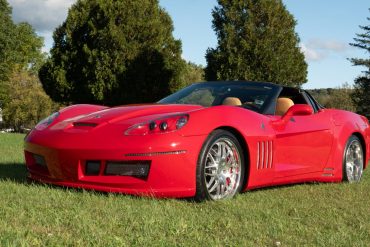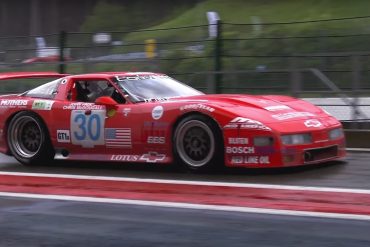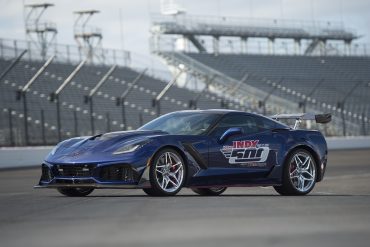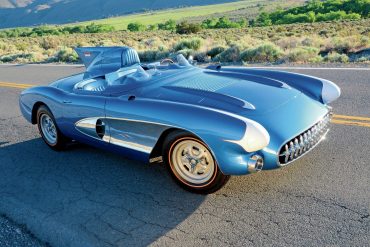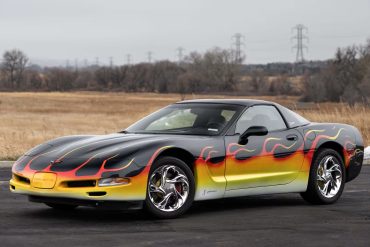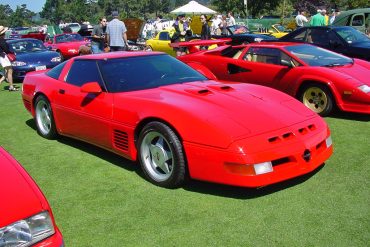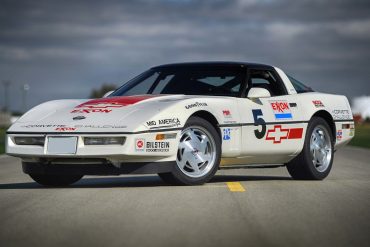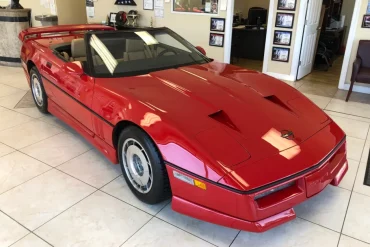How do you beat a slew of Fox-Body 5.0 Mustangs that seemingly dominated the roads in the late '80s? You take a 454 cu.-in. big-block engine and stuff into a C4 Corvette and call it "Big Doggie". An experimental vehicle used to determine how to convert from a small block to a big block. Its 454 big block V8 along with its orange paint make this high horsepower engineering study a one-of-a-kind standout in Corvette history. The car had as much HP as the '90 ZR-1 did and it was named "ZR-2" or "Big Doggie". Old dog, new tricks joke?
It only takes a quick once over to notice there is something special and different about this C6. From the...
The 2023 Corvette Z06 pace car uses the same 670-horsepower 5.5-liter naturally aspirated V8 as the road-going version. It has the Z07 Performance Package that has additional features like Magnetic Ride Control 4.0 calibrations, carbon-fiber wheels with Michelin Sport Cup 2 R ZP tires, and carbon-ceramic brakes. The pack also adds carbon pieces to the body.
This one-off 1961 Vignale Corvette was built for the 1961 Salon de l'Automobile in Paris, France. It was based on a 1960 Corvette chassis and built by Italian coachmaker Carrozzeria Vignale. The body was designed by Gordon Kelly.
If you happened to see this 1981 Greenwood Daytona Turbo out in the wild, at first glance, you might shrug...
Somewhere in the second part of 1959, project XP-720 begins at GM Styling, to design a production Corvette based on Bill Mitchell's Sting Ray racer. It would become known as the C2 or second generation Corvette. In October of that same year, a clay mock-up of project XP-720 is completed and put on display for General Motors' management viewing.
Duntov laid out three design concepts that took decades to implement. The first was his proposal for the 1957 Q-Corvette. This design called for the following: an all-aluminum, fuel-injected small-block engine, four-wheel independent suspension, four-wheel disc brakes, and a transaxle. This design concept arrived in 1997 as the C5.
When Chevrolet introduced the fifth-generation Corvette in 1997, Callaway immediately began development of a platform that would compliment and enhance the all-new C5 model. Reeves Callaway,...
In 1989 Callaway introduced a Speedster which was the culmination of their styling, engineering and trimming talents. Their first example was a bright green ZR1, which had a severely chopped windscreen, no side mirrors, eighteen inch wheels and a vibrant blue leather interior stitched purposefully from Germany. Nothing about Callaway’s Speedster was reserved, and this is especially true when investigating the specification. The car had 450 horsepower.
This one-off Corvette was custom-built by GM Styling under famed design chief Bill Mitchell, especially for the famed industrialist and Indianapolis racing sponsor Ozzie Olson of Olsonite fame. Among its special modifications including custom floor grates that were a trademark feature of the GM Styling specials
Chevrolet's introduction of the LT1 in 1992 as the base engine in the Corvette phased out the L98 based Callaway Twin Turbo. Previously, Callaway Corvettes made their increased power through positive manifold pressure; now they made it through increased displacement and finesse. Initially called the CL1 or CR1, they designated the chassis they were built upon. They were based on the pushrod LT1 cars (CL1) or the 32 valve DOHC LT5 ZR-1 cars (CR1).
John Greenwood, renowned as a master engine builder and race car driver, is credited with the creation of the “Greenwood...
The sixth-generation (C6) Corvette, introduced in 2005, remains a technical and design marvel. The high-performance Z06 version, also debuting that...
Not too dissimilar from this fourth generation Greenwood Corvette was this G5R. Again it was a performance resin bodykit that usually came along with a host of performance upgrades. Included was a front splitter, high rise hood, rear tunnel, rear wing, and windshield fairing. Greenwood has always been the leader in high performance aerodynamics and we are proud to offer the finest and most effective designs for your C5 Corvette.
The C7 Z06 enters supercar territory with race-proven design, advanced technologies and world-class performance. With track-focused Z07 performance package, 2015 Corvette Z06 delivers faster lap times than 2013 Corvette ZR1. It is the first Corvette Z06 to offer supercharged engine, paddle-shift automatic transmission and removable roof panel for coupes, and convertible model. New LT4 supercharged 6.2L V-8 SAE-certified at 650 hp and 650 lb-ft of torque.
The 2013 Corvette 427 Convertible served double-duty as a commemorative edition model. While it marked the departure of the sixth-generation Corvette, it also...
The Corvette Rondine concept was built by Pinanfarina and introduced at the 1963 Paris Motor Show. The car started life as a 1963 split-window Corvette, which is all the more unusual because Chevrolet introduced the split-window coupe at the same time that Pinanfarina was introducing a custom-built Corvette based on that very same platform.
The story of this Chevrolet begins with Fords - specifically, the purpose-built IMSA Mustangs and SCCA Trans Am Mercury Capris that became major forces in those series in 1984-85. In 1985, a Mustang built by Jack Roush and chassis firm Protofab took a young John Jones to the IMSA GTO crown and a Roush Protofab Mercury Capri had done the same in the Trans Am championship.
Nothing seems to generate more buzz (and angst) among Corvette enthusiasts than speculation about what the next generation will look...
The Corvette ZR1 defies easy categorization. It’s a dual-personality machine, transforming from a savage racetrack dominator to a luxuriously smooth...
The Karvajal ZX1, with only three units produced, was first showcased at the 2009 New York Auto Show. This unique...
Built in 1995 by Doug Rippie Motorsports, this ZR-1 Corvette is the only such example to compete in the 24...
The 2019 Corvette ZR1 was the official Pace Car for the 2018 Indianapolis 500 presented by PennGrade Motor Oil and led drivers to the green flag on Sunday, May 27, for the 102nd running of the legendary race. It marks the 15th time a Corvette has served as the official Pace Car since 1978, and the 29th time a Chevrolet has led the field dating back to 1948, when a 1948 Fleetmaster Six convertible paced the race.
Designed mid-1956 for Harlet Earl’s son Jerry, the SR-2 was put into racing duty in 1957. The car debuted at Daytona Beach in 1957 with a high-speed canopy, fender skirts and bullet-shaped frond headlights. Driven by Betty Skelton and Buck Baker, the car won the modified class with an average speed of 93.074 mph. The SR-2 also finished second in class for the flying mile with a top speed of 152.886 mph.
Welcome to the second episode of The Best Of CorvSport–if you missed the first, check out The Top 10 Guides...
This GM concept show car, produced in 1998, was a collaborative effort between General Motors designers and engineers at the...
When Chevrolet changed gears to the LT1 engine, Callaway revealed their new SuperNatural line and the CR1 based on the ZR1’s LT5. Options for the CR1 included the radical Aerobody, German upholstery and special wheels, brakes and exhausts. The CR1 used a larger displacement to produce either 475 or 490 bhp.
The 1988 Corvette Challenge Series was created by John Powell of Powell Motorsports. Chevrolet built fifty-six identical Corvettes for the first year of the Corvette Challenge in 1988. Each was equipped exactly the same, with all standard equipment, the 245hp Cross-Fire fuel injection engine, Doug Nash 4+3 transmission, Z51 Handling Suspension package.
Offered from 1987 to 1991, the RPO-B2K upgrade was available from any Chevrolet dealer and also Callaway’s first major Corvette tuning program. Together, GM and Callaway made the upgrade package a Regular Production Order (RPO) which was the first time GM had outsourced such an option to a specialist manufacturer. It even had a factory back warranty. As the C4 updated, so did Callway’s program and by 1988, the B2K was pushing 382 bhp and 562 ft. lbs. of torque.
I’ll admit, at first glance of the front, I thought this was another Kindig CF1. Then, as I scrolled around...


